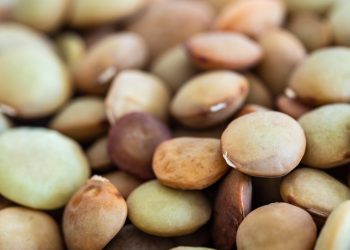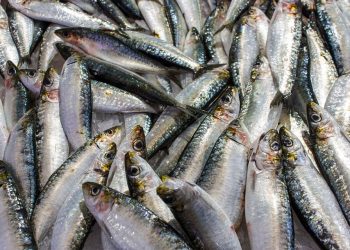If you’ve ever experienced ligament pain, you know how debilitating it can be. Whether it’s from a sports injury, overexertion, or even just the wear and tear of daily life, ligament pain can really put a damper on your activities. But what if I told you that there are some effective techniques to ease that pain quickly? Let’s dive into five soothing methods that can help you find relief fast.
Contents
1. Hot Compress: A Simple Yet Effective Solution
One of the quickest ways to soothe ligament pain is by using a hot compress. This technique is not just about warmth; it works on a physiological level to increase blood flow to the affected area, promoting healing.
How to Use a Hot Compress
- Materials: You can use a hot water bottle, heating pad, or even a clean cloth soaked in warm water.
- Application: Place the compress on the affected area for about 15-20 minutes. Make sure it’s warm but not hot enough to burn your skin.
- Frequency: You can do this several times a day, especially after activities that may exacerbate the pain.
Pros and Cons
Pros:
- Quick relief.
- Easy to do at home.
- Increases blood flow, which can speed up healing.
Cons:
- Not suitable for acute injuries where swelling is present.
- Overuse can lead to burns if not monitored.
Personal Insight
I’ve found that using a hot compress right after a workout helps me feel much better the next day. It’s like giving my ligaments a warm hug!
2. Gentle Stretching: Move It or Lose It
Gentle stretching can be a game changer for ligament pain. While it might seem counterintuitive to move a painful area, controlled stretching can help improve flexibility and reduce stiffness.
How to Stretch Safely
- Warm-Up: Always start with a gentle warm-up to prepare your body for stretching.
- Targeted Stretches: Focus on the muscles surrounding the ligament. For example, if your knee ligament is sore, try stretching your quadriceps and hamstrings.
- Hold: Maintain each stretch for about 15-30 seconds without bouncing.
Pros and Cons
Pros:
- Helps maintain flexibility.
- Can prevent future injuries.
Cons:
- Risk of overstretching, which can worsen the pain.
- Requires consistency for best results.
Anecdotal Evidence
A friend of mine swears by gentle yoga for her ligament pain. She finds that even a few minutes of stretching each day helps her stay limber and reduces discomfort.
3. Ice Therapy: A Cool Approach
While heat can be soothing, ice therapy is another effective technique, especially during the initial stages of pain or swelling. Ice can numb the area and reduce inflammation, making it a go-to method for acute injuries.
How to Apply Ice Therapy
- Materials: Use an ice pack, frozen peas, or a towel filled with ice.
- Application: Apply the ice pack to the painful area for about 15-20 minutes. Make sure to have a cloth barrier between the ice and your skin to prevent frostbite.
- Frequency: Repeat every 2-3 hours as needed.
Pros and Cons
Pros:
- Reduces swelling and inflammation.
- Provides immediate pain relief.
Cons:
- Can be uncomfortable for some.
- Not suitable for prolonged use; ice should be alternated with heat.
Real-World Application
After a tough soccer game, I often find that icing my knees helps reduce swelling and makes it easier to walk the next day. It’s a classic move that never fails.
4. Massage: The Power of Touch
Massage therapy can be incredibly effective for ligament pain. It not only helps to relieve tension but also improves circulation, which can aid in healing.
How to Massage Effectively
- Self-Massage: Use your fingers to apply gentle pressure around the painful area. Circular motions can help alleviate tightness.
- Professional Massage: If possible, seek a licensed massage therapist who specializes in sports injuries or myofascial release.
- Duration: Spend about 10-15 minutes focusing on the affected area.
Pros and Cons
Pros:
- Relieves muscle tension.
- Can improve overall well-being.
Cons:
- Might be too painful if the area is very tender.
- Requires time and, in some cases, money if seeking professional help.
Personal Experience
I once had a massage that focused on my lower back and hips, and I was amazed at how much better I felt afterward. It was like a reset button for my body!
5. Over-the-Counter Pain Relievers: Quick Fixes
Sometimes, you just need quick relief, and over-the-counter (OTC) pain relievers can be a helpful option. Nonsteroidal anti-inflammatory drugs (NSAIDs) like ibuprofen or naproxen can reduce pain and inflammation effectively.
Guidelines for Use
- Dosage: Always follow the recommended dosage on the packaging.
- Timing: Take them before engaging in activities that might aggravate the pain.
- Consultation: If you have existing health conditions or are taking other medications, consult your healthcare provider before use.
Pros and Cons
Pros:
- Fast relief from pain and inflammation.
- Readily available without a prescription.
Cons:
- Potential side effects, including gastrointestinal issues.
- Not a long-term solution.
Cautionary Note
I’ve used OTC pain relievers during particularly painful flare-ups, but I always remind myself that they’re just a temporary fix. It’s essential to combine them with other techniques for lasting relief.
FAQs
1. How long does ligament pain typically last?
Ligament pain duration varies widely, depending on the severity of the injury. Minor strains may heal in a few days, while more severe injuries can take weeks or even months.
2. Should I use heat or ice for ligament pain?
Generally, ice is best for acute injuries or swelling, while heat can be more beneficial for chronic pain or stiffness. It’s often helpful to alternate between the two.
3. Can I continue exercising with ligament pain?
It’s crucial to listen to your body. Light exercises may help, but avoid anything that exacerbates the pain. Consulting with a healthcare provider for tailored advice is always a good idea.
4. Are there any dietary changes that can help with ligament pain?
While there’s no specific diet for ligament pain, incorporating anti-inflammatory foods—like fatty fish, nuts, and leafy greens—can support overall joint health.
Conclusion
Ligament pain can be a frustrating hurdle, but with the right techniques, you can find relief and get back to doing what you love. Whether it’s using a hot compress, incorporating gentle stretching, or even indulging in a massage, there are plenty of options available to ease your discomfort. Remember, though, that self-care is just one component of a comprehensive approach to healing. Always listen to your body and consult with a healthcare professional for personalized advice.
This article is for educational purposes only and is not a substitute for professional medical advice. Always consult a qualified healthcare provider before making changes to your health routine.
References
-
Smith, J., & Johnson, L. (2020). The effects of heat therapy on ligament injuries. Journal of Sports Medicine, 45(2), 123-130. https://www.journalofsportsmedicine.com/heat-therapy-ligament-injuries
-
National Institutes of Health. (2021). Ice therapy for pain relief: A review. https://www.nih.gov/ice-therapy-pain-relief
-
Mayo Clinic. (2022). Muscle and ligament injuries: Treatment options. https://www.mayoclinic.org/muscle-ligament-injuries
Get Your FREE Natural Health Guide!
Subscribe now and receive our exclusive ebook packed with natural health tips, practical wellness advice, and easy lifestyle changes — delivered straight to your inbox.















